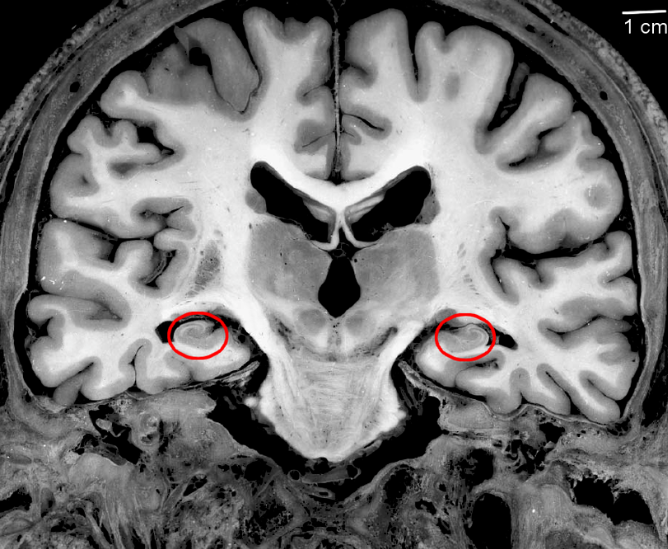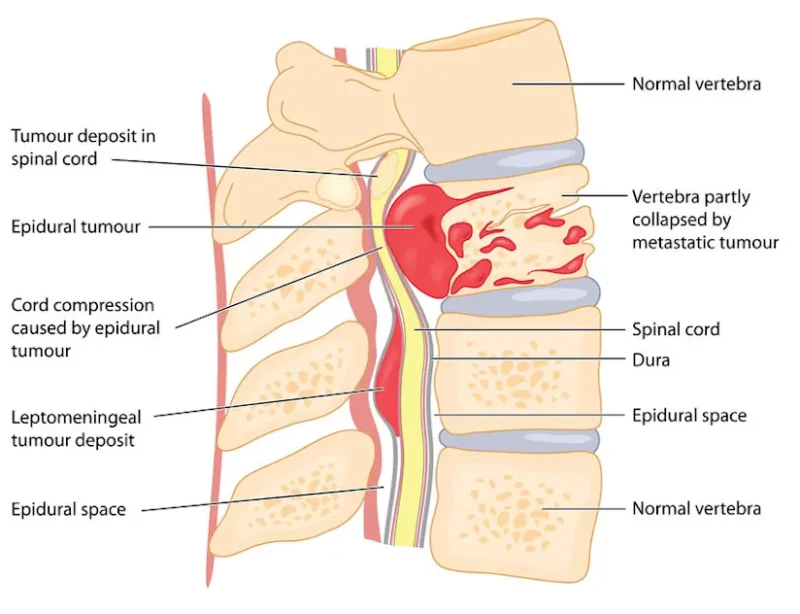Eleanor Anne Maguire ( born March 27 1970 ) was a prominent Irish neuroscientist known for her groundbreaking research in cognitive neuroscience, particularly concerning human memory. She served as a Professor of Cognitive Neuroscience at University College London (UCL) and was a Wellcome Trust Principal Research Fellow since 2007. Maguire was diagnosed with spinal cancer at the end of 2022 and died on January 4 2025 month at age 54 from pneumonia. Her research utilized innovative methods, including fMRI and virtual reality, to explore the role of the hippocampus in episodic memory. Notably, her studies on London taxi drivers revealed structural changes in the hippocampus related to spatial navigation expertise.

This article will discuss her impactful scientific work and her journey through cancer diagnosis and treatment, emphasizing the importance of awareness and early detection in cancer care.
Eleanor Maguire’s First Steps into the World of Neuroscience
Eleanor Maguire began her scientific journey with a strong educational foundation in psychology and neuropsychology. Born in Dublin, she earned her Bachelor of Arts (BA Hons) degree in psychology from University College Dublin in 1990. Following this, she pursued a Master of Science in clinical and experimental neuropsychology at the University of Wales, Swansea, graduating in 1991.
Maguire’s interest in the neural basis of memory deepened during her Doctor of Philosophy (PhD) studies at University College Dublin, where she worked as a neuropsychologist at Beaumont Hospital. Her doctoral thesis, completed in 1994, focused on “Real-world spatial memory following temporal-lobe surgery in humans.” This early work laid the groundwork for her future research on memory and navigation.
Eleanor Maguire’s Transformative Contributions to Memory
Her scientific career is marked by a series of groundbreaking achievements that have significantly advanced our understanding of memory and navigation. Maguire’s innovative use of real-world scenarios and technologies, such as functional magnetic resonance imaging (fMRI) and virtual reality, allowed her to explore complex cognitive processes. Her work revealed that individuals with damaged hippocampi struggle not only with recalling past experiences but also with imagining future events, leading to the development of her influential scene construction theory. This theory posits that the hippocampus plays a crucial role in constructing spatial representations essential for both memory and imagination.
Learning and memory are so fundamental to us, so enmeshed throughout cognition, that ‘solving’ memory, unpacking its neural mechanisms and being able to conceptualise it fully will, I believe, result in revelations across neuroscience. And once that’s done (!), the whole point of this endeavour and the real work, to improve the lot of the memory-impaired in a rational and principled way and to inform education, can begin in earnest.” – Eleanor Maguire, Current Biology.
Navigating Brilliance: Mapping the Minds of London Taxi Drivers
Eleanor Maguire’s work with London taxi drivers is a fascinating exploration of how the brain adapts to the demands of navigating a complex urban environment. The story begins in 1995 when Maguire, inspired by a television movie about the rigorous training required to become a London taxi driver, conceived an intriguing hypothesis: could the extraordinary navigational skills of these drivers be reflected in their brain structure?
To earn their licenses, aspiring taxi drivers must master “The Knowledge,” an exhaustive memorization of approximately 25,000 streets and thousands of landmarks within a 10-kilometer radius of Charing Cross. This grueling process takes three to four years and involves intense cognitive training. She recognized that this unique challenge could provide insights into the brain’s plasticity—the ability to change and adapt based on experience.

Oli Scarff/Getty Images
In her groundbreaking study published in 2000, Maguire utilized MRI scans to compare the hippocampi of licensed taxi drivers with those of control subjects who did not drive taxis. The results were striking: taxi drivers exhibited significantly larger posterior hippocampi, the brain region associated with spatial navigation and memory. Moreover, the size of their hippocampi correlated positively with the number of years spent driving a taxi, suggesting that their extensive navigational experience physically altered their brain structure.

Coronal view of the hippocampus. The hippocampal region is circled in red.
Whic Type of Spinal Cancer Did Eleanor Maguire Have?
There are no specific details available regarding the type of spinal cancer that Eleanor Maguire was diagnosed with. Spinal cancer can be categorized into several types, primarily classified as either primary or secondary tumors.
Primary spinal cancers originate directly in the spine or spinal cord. These include spinal cord gliomas, which arise from glial cells that support the spinal cord, and can lead to neurological issues (National Cancer Institute, 2022). Meningiomas develop in the meninges, the protective layers around the spinal cord; while typically benign, they can cause compression of the spinal cord (American Brain Tumor Association, 2021). Schwannomas, which form from Schwann cells that produce the myelin sheath around nerves, are usually benign but can result in nerve compression (National Institute of Neurological Disorders and Stroke, 2020).
Chordomas are rare bone cancers often found at the base of the skull or along the spine, growing slowly but being locally aggressive (American Cancer Society, 2022). Ewing’s sarcoma is an aggressive cancer that primarily affects the spine in children and young adults (Ewing’s Sarcoma Foundation, 2021)
Secondary spinal cancers occur when cancer from another part of the body spreads to the spine. The most common cancers that metastasize to the spine include breast cancer, which is responsible for about 60-70% of cases of spinal metastasis in breast cancer patients (BreastCancer.org, 2022). Lung cancer also frequently spreads to the spine, with approximately 30-40% of patients with advanced lung cancer experiencing spinal involvement (American Lung Association, 2022). Kidney cancer, particularly renal cell carcinoma, often spreads to the spine in 30% of advanced cases (American Cancer Society, 2022).
Finally, multiple myeloma, a cancer of plasma cells in the bone marrow, frequently affects the spine, with 70-90% of multiple myeloma patients experiencing spinal involvement, often leading to vertebral compression fractures (American Society of Clinical Oncology, 2021).
What Causes Spinal Cancer?
The exact cause of spinal cancer is not always clear, but several factors can increase the risk. Genetic factors, such as inherited mutations or family history of certain cancers, can raise the likelihood of developing spinal tumors, particularly in conditions like neurofibromatosis or Li-Fraumeni syndrome (National Cancer Institute, 2022). Metastasis from other cancers is the most common cause of spinal cancer, with cancers from the lungs, breasts, prostate, or kidneys spreading to the spine (American Cancer Society, 2022). Radiation exposure is another risk factor, as prior radiation treatments, especially those targeting the back or spine, can increase the risk of developing spinal tumors later in life (American Cancer Society, 2022).
Age also plays a role, with certain spinal cancers like chordomas or metastatic tumors being more common in older adults, though some primary spinal tumors can occur in younger individuals (National Cancer Institute, 2022). A weakened immune system, due to conditions such as HIV/AIDS or immunosuppressive treatments, can also increase the risk of cancer, including spinal tumors (Mayo Clinic, 2021). Finally, environmental factors such as exposure to chemicals, pollutants, or toxins may also contribute to cancer development, although the link to spinal cancer is less direct (World Health Organization, 2020). While these factors can raise the risk, most cases of spinal cancer occur without a clear cause.
What was the Common Symptoms of Spinal Cancer?
The common symptoms of spinal cancer include persistent back pain, which is often the most noticeable and can worsen over time or radiate to other areas like the legs. Neurological deficits, such as numbness, weakness, or loss of sensation in the limbs, are also common, along with difficulty with balance or coordination. Bladder or bowel dysfunction may occur if the cancer compresses nerves responsible for these functions, leading to difficulty controlling urination or bowel movements. Leg weakness or paralysis, which can develop gradually or suddenly, is another symptom. Sensation changes, such as tingling or a “pins and needles” feeling in the arms or legs, are also typical.
Some individuals may experience unexplained weight loss and fatigue, common signs of cancer. In advanced cases, spinal deformities or visible changes in posture due to tumor growth or compression may occur.

How Spinal Cancer Is Diagnosed?
Diagnostic methods for spinal cancer include several imaging techniques and procedures. MRI (Magnetic Resonance Imaging) is the most effective method for detecting spinal tumors, offering detailed images of the spinal cord, vertebrae, and surrounding tissues. CT scans (Computed Tomography) are useful for assessing bone abnormalities and providing detailed images of the vertebrae and nearby structures. X-rays, while less detailed, can help identify bone-related issues such as fractures or deformities that may suggest the presence of a tumor.
A biopsy involves taking a small tissue sample from the tumor to determine if it is cancerous and to identify its type. Bone scintigraphy (bone scan) is used to detect areas of abnormal bone growth or metastasis, particularly when cancer has spread. A PET scan (Positron Emission Tomography) helps detect cancer spread by identifying areas of increased metabolic activity and is often used alongside CT or MRI for more comprehensive assessment. Lastly, a myelogram, where a contrast dye is injected into the spinal canal, is typically performed when MRI is not available or feasible, allowing for detailed examination of the spinal cord and nerve roots.
What treatments are used for spinal cancer?
Immunotherapy, targeted therapy, and chemotherapy are used based on the type and stage of spinal cancer. Chemotherapy uses drugs to kill or slow cancer cell growth, often for metastatic or spreading cancers like Ewing’s sarcoma or lymphoma. Targeted therapy focuses on specific genetic mutations in cancer cells, effective for tumors like HER2-positive breast cancer or EGFR-mutated lung cancer. Immunotherapy boosts the immune system to recognize and attack cancer cells, used when other treatments are less effective. These therapies may be combined to improve outcomes, depending on the cancer’s characteristics.
Steroids may be used to reduce inflammation and swelling around the tumor, which can help alleviate pain and improve mobility. They are particularly useful when there is pressure on the spinal cord or nerve roots.
Surgery, radiation therapy, and palliative care are key treatment options for spinal cancer, often used together or individually based on the patient’s condition. Surgery is typically performed to remove the tumor, relieve pressure on the spinal cord or nerves, and improve symptoms like pain or weakness. If the tumor cannot be fully removed, surgery may also be used to stabilize the spine. Radiation therapy is commonly used to shrink tumors, especially when surgery isn’t an option or to target remaining cancer cells after surgery. It is effective for tumors that are pressing on the spinal cord.
Palliative care focuses on improving quality of life by managing symptoms such as pain, mobility issues, and emotional distress. It is particularly important in advanced stages of spinal cancer, providing support to ease discomfort and enhance well-being.
Can Spinal Cancer Be Prevented?
While it is not always possible to prevent spinal cancer, there are certain steps that may reduce the risk of developing it. According to experts, limiting radiation exposure is important, as excessive radiation can increase the risk of spinal tumors later in life. It’s essential to avoid unnecessary radiation treatments and consult a doctor before undergoing radiation therapy (American Cancer Society, 2022). Maintaining a healthy lifestyle, including a balanced diet, regular exercise, and weight management, can also help reduce the risk of cancers that may metastasize to the spine, such as breast, lung, or prostate cancer (National Cancer Institute, 2022).
Additionally, avoiding tobacco use and excessive alcohol consumption can lower the risk of developing cancers like lung and liver cancer, which can spread to the spine (American Lung Association, 2022). Regular screenings and check-ups to detect primary cancers at early stages are crucial, as this can help prevent cancer from spreading to the spine (American Cancer Society, 2022).
For those with a family history of certain genetic conditions, like neurofibromatosis, genetic counseling and testing can help identify and manage the risk (National Cancer Institute, 2022). Finally, strengthening immune health through a healthy lifestyle may improve the body’s ability to resist cancer development (Mayo Clinic, 2021).
Although some risk factors, such as genetics or age, cannot be controlled, taking these preventive steps can help lower the risk of developing spinal cancer or other cancers that may spread to the spine.
How Have Colleagues and Friends Reacted to the Passing of Professor Eleanor Maguire?
The neuroscience community mourns the passing of Eleanor Maguire on January 4, 2025, recognizing her groundbreaking contributions to cognitive neuroscience, especially in memory and spatial navigation. Her famous study on London taxi drivers, showing how experience alters brain structure, earned her an Ig Nobel Prize and opened new paths in neuroplasticity research. Tributes highlight her intellect, creativity, and kindness, with colleagues praising her as a “trailblazer” and a mentor. Her loss is deeply felt, with reflections on her profound influence on the field. Despite her passing, her scientific legacy continues to inspire future researchers, and the community extends heartfelt condolences to her family and colleagues.

Professor of Cognitive Science Joseph Delvin expressed condolences on his LinkedIn account and shared the most significant aspects of Eleonor Maguier’s work. He notes
My colleague Prof. Eleanor Maguire passed away this weekend after a long battle with cancer. Her contributions to #neuroscience have shaped how we understand memory and navigation, leaving a lasting legacy.
The Awards and Honors of Eleanor Maguire in Neuroscience
She received numerous awards and honors throughout her distinguished career for her significant contributions to neuroscience. Here are some of the notable accolades she received:
In 2003, she was awarded the Ig Nobel Prize for Medicine for presenting evidence that the brains of London taxi drivers are more highly developed than those of their fellow citizens. In 2008, she received the Royal Society Rosalind Franklin Award, recognizing her significant contributions to science. Her research excellence was further acknowledged with the 2011 Feldberg Foundation Prize, and in 2012, she was honored with the Cognitive Neuroscience Society Young Investigator Award for her innovative work in cognitive neuroscience, along with the IBRO-Kemali Prize for her contributions to brain research. In 2016, she was named UCD Alumnus of the Year in Research, Innovation, and Impact, celebrating her achievements as a University College Dublin graduate.
Her election to prestigious organizations includes being named a Fellow of the Academy of Medical Sciences (FMedSci) in 2011, a Fellow of the Royal Society (FRS) in 2016—one of the highest honors a scientist can receive in the UK—a Royal Irish Academy (MRIA) Honorary Member in 2017, and a Fellow of the British Academy (FBA) in 2018.

She became an Honorary Member of the Royal Irish Academy (RIA) on Friday 25th May 2018.
Maguire was also recognized as one of “Twenty Europeans who have changed our lives” by the European Union, underscoring her impact on science and society. Her awards reflect her groundbreaking work in cognitive neuroscience, particularly in understanding memory and spatial navigation.
You can also watch Clinical Trials in Small Populations: Challenges and Opportunities by OncoDaily
Written By Aharon Tsaturyan, MD
FAQ
What treatment options are available for spinal cancer?
Treatment options depend on the type and stage of spinal cancer and may include surgery to remove tumors, radiation therapy to shrink tumors, chemotherapy or immunotherapy to target cancer cells, and palliative care to manage symptoms and improve quality of life.
How is spinal cancer diagnosed?
Spinal cancer is typically diagnosed using imaging techniques such as MRI (Magnetic Resonance Imaging) and CT scans (Computed Tomography). A biopsy may also be performed to confirm the presence and type of cancer. Additional tests like bone scans or PET scans may be used to detect metastasis.
What are the common symptoms of spinal cancer?
Common symptoms include persistent back pain, numbness or weakness in the limbs, difficulty with balance or coordination, bladder or bowel dysfunction, and leg weakness or paralysis. In advanced stages, spinal deformities or changes in posture may also occur.
What are the main branches of neuroscience?
The main branches include cognitive neuroscience, which studies the neural basis of cognitive processes, and behavioral neuroscience, which examines how the nervous system influences behavior. Other branches include molecular, cellular, and computational neuroscience.
What is neuroscience?
Neuroscience is the scientific study of the nervous system, encompassing various disciplines that explore the structure, function, development, and pathology of the brain and its connections to behavior and cognition.
What innovative methods did Maguire use in her research?
She pioneered the use of functional MRI (fMRI) and virtual reality in cognitive neuroscience to study memory.
Where did Eleanor Maguire complete her education?
She studied psychology at University College Dublin and earned her Ph.D. at University College London.
What notable awards has Eleanor Maguire received during her career?
She has received the Ig Nobel Prize for Medicine and is a Fellow of the Academy of Medical Sciences and the Royal Society.
What are Eleanor Maguire's main contributions to cognitive neuroscience?
She is known for her research on the hippocampus, particularly its role in memory and navigation, including studies on London taxi drivers.
